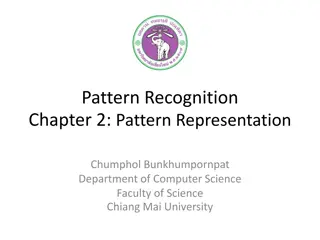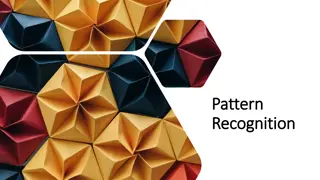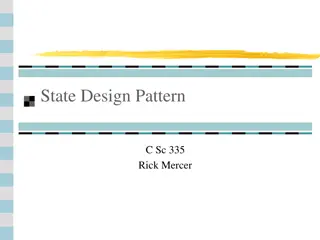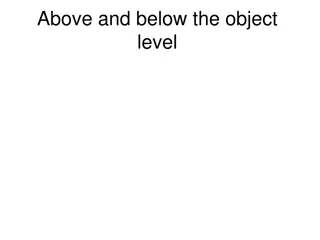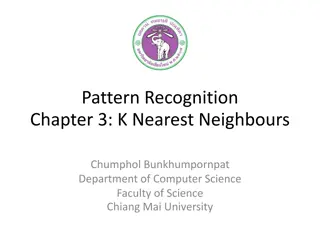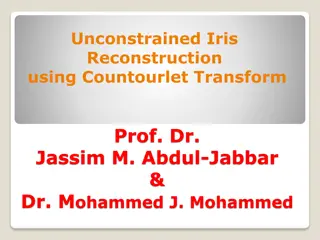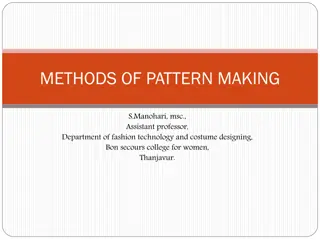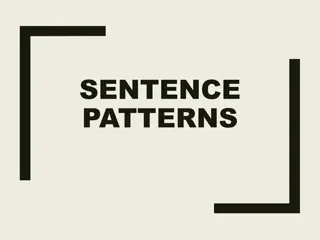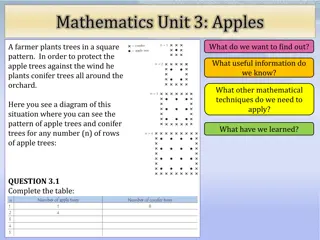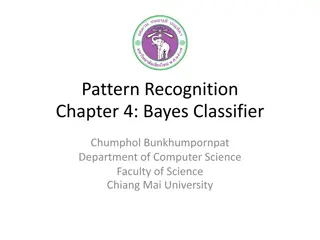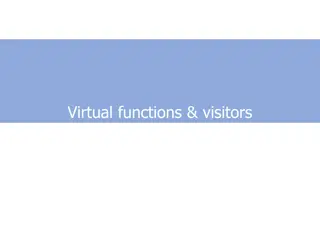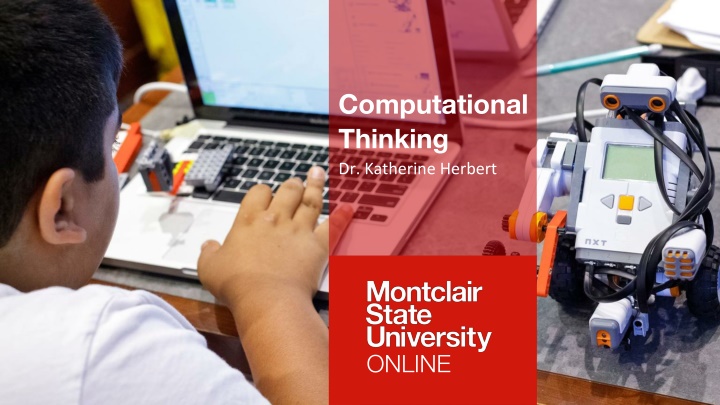
Computational Thinking and Pattern Recognition in Programming
"Learn about computational thinking, decomposition, and pattern recognition in programming. Explore common programming constructs and the importance of input and output in problem-solving. Enhance your skills with valuable insights from Dr. Katherine Herbert's online course."
Download Presentation

Please find below an Image/Link to download the presentation.
The content on the website is provided AS IS for your information and personal use only. It may not be sold, licensed, or shared on other websites without obtaining consent from the author. If you encounter any issues during the download, it is possible that the publisher has removed the file from their server.
You are allowed to download the files provided on this website for personal or commercial use, subject to the condition that they are used lawfully. All files are the property of their respective owners.
The content on the website is provided AS IS for your information and personal use only. It may not be sold, licensed, or shared on other websites without obtaining consent from the author.
E N D
Presentation Transcript
Computational Thinking Dr. Katherine Herbert ONLINE
Decomposition and Pattern Recognition In the last lecture we talked about Decomposition. Decomposition is the process of dividing a problem up into more manageable smaller problems whose solutions can be integrated later to address the original problem. In decomposition, we have to keep dividing a problem up until we have easy to manage problems that correspond to simple solutions that we know. Therefore, how do we know when to stop? TLRN 500 SUMMER 2021 3
Pattern Recognition Pattern Recognition is the understanding of the common tools and pieces we can use in computing to then match them up with the smaller problems we are generating in decomposition. We can look at three types of pattern recognition Common programming constructs Common techniques used in a certain style of problem solving Design Patterns for Software Engineering TLRN 500 SUMMER 2021 4
Common Programming Constructs Often, a new programmer learns their first skills in pattern recognition through learning programming constructs. Programming constructs are standard techniques used in popular programming languages to build solutions. When a student is first learning a language, it is extremely overwhelming. Programming takes most students out of their comfort zones . Understanding the basic programming constructs can help students understand programming and then adapt to other languages. TLRN 500 SUMMER 2021 5
Common Programming Constructs Input and Output Variables Assignment Statements Conditionals Iteration Container constructs (arrays and lists) Methods, procedures and functions User Defined Types TLRN 500 SUMMER 2021 6
Input and Output It is Used when you need to communicate with your user. Input you obtain data Output you display or save data It is used for human-computer interactions. It is also used when you need to obtain data that might come from: A data stream like twitter A database A file Another source that is not necessarily someone typing in info TLRN 500 SUMMER 2021 7
Variables Variables are data holders they use an easy to remember name to represent a place in memory. Variables usually have a type: Integer short or long Decimal float, double precision or specialized extremely large decimals Character String Boolean Arrays or Lists (discussed later) Methods, Procedures and Functions User-defined types (objects) Variables can also be constants , where the intent is to assign the value once then leave it alone. Variables help with abstraction and consistency. TLRN 500 SUMMER 2021 8
Assignment Statements We use an assignment statement when we want to change the value of a variable. When you are decomposing your problem, often change or movement happens in the program when your program does an action on the data. Assignment Statements are how you cause an action on the data. TLRN 500 SUMMER 2021 9
Conditionals Traditionally called the if statements or case statements . There are three major types of these. Classic, basic if statement If-Else statement Multiway branching We use them when we want to enable choices in a program or if we want to categorize our actions, where if one set of data happens, we do one action, while another data occurs we do a different action. TLRN 500 SUMMER 2021 10
Iteration Iteration is when we use a loop structure to do actions. The while loop is the basic loop and the for loop is a special case of the while loop. We use iteration when: We want to use the same code multiple times We are waiting for an event to occur and we do a set of actions while we wait. TLRN 500 SUMMER 2021 11
Container Constructs (arrays, lists, hashes) Often, we will want to apply our program to a bunch of data of the same type or are related to each other in some way. We often refer to this as a set of data. Containers such as arrays or lists let us treat a set of variables as one unit. This makes it easier to use with loops or with methods. Implementation of arrays and lists can vary from programming language to programming language. If you use such a construct, you will want to pay attention to the implementation details. TLRN 500 SUMMER 2021 12
Methods, Procedures and Functions Often, a group of code we author will have a particular purpose. Consider, for example, the concept of average. We know what it is and we would want to use it again and again. A method, procedure or function lets us group this code together for reuse. We need to let the programmer know how to send it data and what data it sends back, but otherwise the programmer doesn t worry about the details of the implementation after the first use. Different languages use different words to describe methods. Procedure is often reserved for methods that return a void value. TLRN 500 SUMMER 2021 13
Data Types and User-Defined Types A data type is data and actions associated with that data. For example, Integer consists of positive and negative whole numbers and 0. The actions we can do to Integer are addition, subtraction, multiplication, division, modulo, print or get the value, and assign an integer to a variable (set a value). Users can create their own data types. That is what classes are in an object oriented language. You have a data section (usually a number of variables that break down into the simple data types) and then actions you can do on that data. TLRN 500 SUMMER 2021 14
User-Defined Types, Classes and Objects In programming, there are four generally agreed upon styles of programming Imperative, Object Oriented, Declarative and Functional. Imperative and Object-Oriented are the two that are used most frequently. Imperative style is when you make a list of steps and the computer runs through the list step by step. Object Oriented style tries to mimic the real world. Take for example a pen. How to you know what to do with a pen? We need to create code that gives the user every possible thing they can do with the pen. TLRN 500 SUMMER 2021 15
User-Defined Types User-Defined Types give us further powerful tools to program. We often identify the following as a part of User-defined types: Encapsulation grouping everything together for ease of use Inheritance repurposing existing code for a highly similar purpose but extending that code with new functionality. Think clock vs alarm clock. Polymorphism having code that does the same thing in concept , but is implemented differently for certain types of problems. Think of the concept of geometric area of a planar figure. We understand the concept of area but it is implemented differently for a square vs a circle vs a triangle. TLRN 500 SUMMER 2021 16
Common Techniques Used to Solve Problems As programming skills develop, there are a number of problem solving techniques used to help solve problems. Example: Not knowing how much data to expect Answer: Use a loop that will keep doing the work until there is no more data. Example: Its impossible to specify a certain condition Answer: Is it easier to specify what you don t want? If so, do that, then take the opposite of it or the data that doesn t fulfill that condition (the not of it) double negation. TLRN 500 SUMMER 2021 17
Design Patterns Professional programmers use the concepts of software engineering to help design software. Software can consist of hundreds of smaller programs or programming units that work together to create the software. Having all of these programs work together is Software Engineering this is a recognized engineering discipline like mechanical or civil engineering at adheres to engineering principals. Overwhelmingly in this field, they use Design Patterns to define their programs. Design patterns are recognized, frequently used techniques to address commonly occurring problems in programming. TLRN 500 SUMMER 2021 18
Design Patterns Examples of situations that use Design Patterns: Creation: Instantiation of data or program instance. Adapters: get one program to talk to another program Facades: makes sure the result of a program conforms to a look and feel of the software. Iterators: group together stuff data, program results, etc and then apply additional programming to those things. Specification: Make sure the Business Logic and the Programming Logic concur (can be done in documentation). Concurrency: When multiple parts of the program are working in different parts of the processor, it manages how we orchestrate that and combine the results. TLRN 500 SUMMER 2021 19

